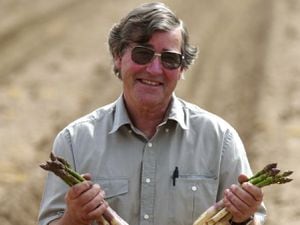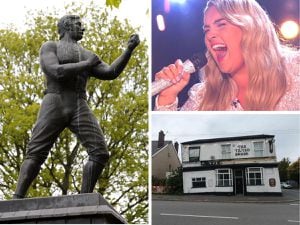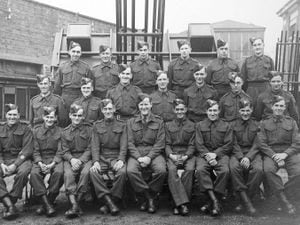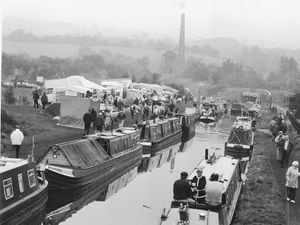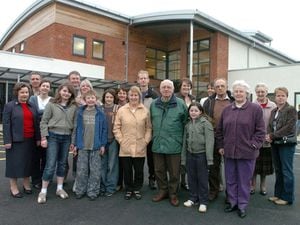Proud 300 year history of Staffordshire’s regiment
For over 300 years the soldiers of Staffordshire served and fought in the county's name, and had a proud and unique boast.
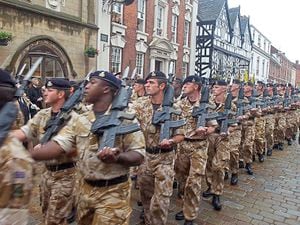
Theirs was the only infantry unit continuously identified with a single county throughout its history.
Until, that is, five years ago, when the Staffordshire name, with all its historic Staffordshire Regiment associations, became a British Army casualty.
Gavin Williamson: My bid to return Staffordshire regimental name to Army
Under early 21st century reorganisation, The Staffordshire Regiment had become the 3rd Battalion The Mercian Regiment (Staffords), an armoured infantry battalion recruiting from Staffordshire, the West Midlands, and Birmingham, and keeping in its title that nod to its Staffordshire ancestry.
"In the last round of MOD cuts the regiment lost a battalion, and it was decided that the 3rd Battalion – the Staffords – would be the one that went," explained Steve Hemming, assistant curator of the Staffordshire Regiment Museum near Lichfield, which tells the story of the county's regiment.
"So there's no Staffordshire battalion as such any more in name. However, the regiment does live on in the Mercian Regiment and wider family, which includes the museum and the regimental association, with retired soldiers."
The regiment's beginnings were the raising of the 38th Regiment of Foot by Colonel Luke Lillingston at the Kings Head, Lichfield, on March 26, 1705. This was one of four regiments which in 1881 became the South Staffordshire Regiment and the North Staffordshire Regiment, which together formed 35 battalions during the Great War, and 17 in the Second World War.
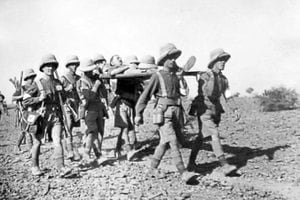
"The Kings Head is still there and is owned by the regimental association, so the old soldiers of the regiment own the pub, and there are various bits of memorabilia," said Steve.
The regiment can celebrate heroes throughout its military family tree.
One pace forward please, Lance Corporal William Harold Coltman. In October 1918 he won the Victoria Cross by repeatedly going out into the open to give first aid to wounded men and bring them back to safety.
Coltman, of Burton-on-Trent, had also won the Military Medal and Bar (which means he won it twice), and the Distinguished Conduct Medal and Bar, making him the most decorated "other rank" – that is, not an officer – in the British Army.
Among other men of the Staffords to win the highest award for valour were Major Robert Henry Cain and Lance Sergeant John "Jack" Daniel Baskeyfield, at Arnhem in 1944.
It was the only occasion during the Second World War where two VCs were awarded to a single army unit for the same battle, in this case the 2nd South Staffords, which were in the airborne forces.
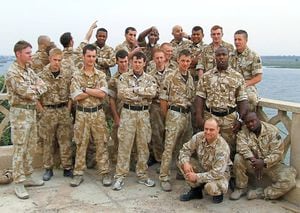
Also of special note were the 1st Battalion of the South Staffords who were Chindits – jungle fighters in Burma.
In 1948 both North and South arms were reduced to a single battalion each, and these merged in 1959 to become The Staffordshire Regiment.
Traditionally the regimental mascot was a Staffordshire Bull Terrier, and that began with a dog called Boxer. In 1882 the South Staffordshire Regiment was sent to the relief of Khartoum. They entrained at Cairo, but unfortunately Boxer leapt from the train and was seen lying unconscious or dead at the side of the track.
A few days later, with the regiment in camp, a thin and bedraggled Boxer staggered in and collapsed, having walked over 200 miles along the scorching desert railway track.
Today's mascot of the regimental association is a Staffie called Sergeant Watchman V, but he's an old soldier now and is due for retirement, with Watchman VI lined up to succeed him.

